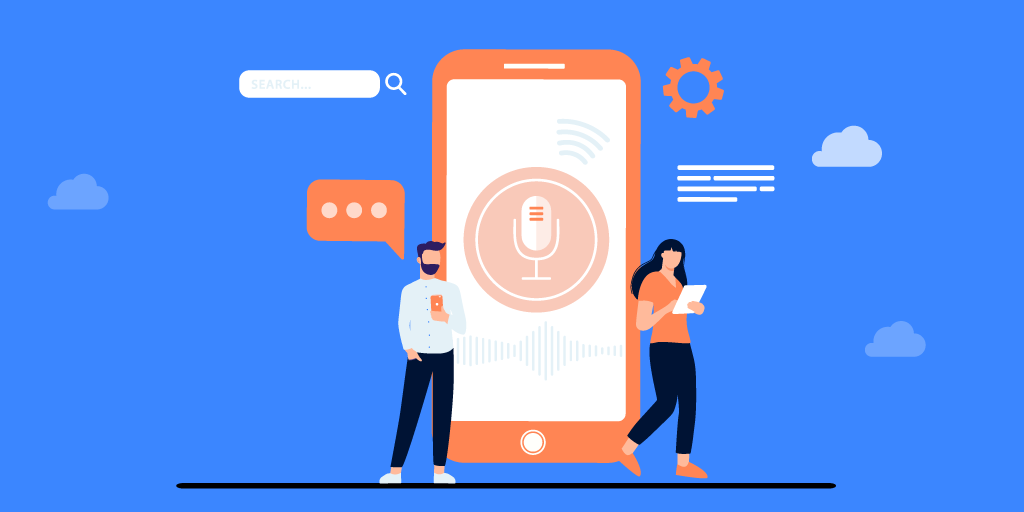In an age where businesses communicate at the speed of voice, how something is said can reveal far more than what is said. That’s the foundational idea behind Voice Behavior Analytics (VBA)—an emerging field that blends artificial intelligence with behavioral science to decode the psychological and emotional cues in speech.
From customer service and healthcare to fraud detection and sales performance, VBA is transforming the way organizations listen to their customers, employees, and partners. And with platforms like AIM Voice leading the charge, the possibilities are expanding rapidly.
What is Voice Behavior Analytics?

Voice Behavior Analytics is a method of analyzing non-verbal vocal elements in human speech to uncover patterns in behavior, emotional state, and intent. While traditional voice analytics focuses on the words spoken, VBA focuses on how those words are delivered.
Key elements analyzed include:
- Tone and pitch variation
- Speech speed and rhythm
- Pauses, hesitations, and interruptions
- Volume fluctuations
- Vocal tremors and microstress indicators
These audio characteristics are processed to determine emotional states like stress, anxiety, confidence, confusion, or deception—providing deep behavioral insights that are often missed in text-based analysis.
Why Voice Behavior Analytics Matters
Voice is one of the most instinctual and emotionally revealing communication channels. It cannot be easily edited, rehearsed, or disguised in the way text can be. For businesses and institutions, this makes VBA a high-value asset in understanding the true meaning behind conversations.
Business benefits of VBA include:
- Enhanced customer experience through early detection of dissatisfaction or confusion
- Increased sales conversions by analyzing interest levels and emotional triggers
- Fraud prevention by identifying stress or deceptive speech patterns
- Improved compliance with real-time detection of policy-sensitive behavior
- Mental health tracking through stress, anxiety, or depression detection in patient voices
How Does Voice Behavior Analytics Work?
Voice Behavior Analytics relies on a combination of AI-driven algorithms, machine learning, and voice signal processing to interpret vocal patterns in real time or post-interaction.
The typical process includes:
- Voice capture: Audio is recorded from phone calls, video meetings, or live conversations.
- Signal extraction: Vocal features are isolated from the recording (excluding the content itself).
- Behavioral analysis: AI models compare voice signals with behavioral and psychological benchmarks.
- Insights delivery: Dashboards, alerts, and reports display findings in an actionable format.
These systems can operate independently or integrate with call center platforms, CRM systems, telehealth portals, and communication tools like Zoom or Microsoft Teams.
Applications Across Industries
Voice Behavior Analytics is industry-agnostic—it can be applied wherever conversations happen. Here are a few examples of how VBA is delivering impact across sectors:
1. Customer Service and Call Centers
- Detect customer frustration before it escalates
- Provide live agent coaching based on tone and engagement
- Optimize agent performance with emotional feedback loops
2. Financial Services
- Identify high-risk behaviors or signs of deception in financial calls
- Monitor compliance in regulated conversations
- Flag potential insider threats or unethical conduct
3. Healthcare and Mental Health
- Monitor stress and anxiety in telemedicine interactions
- Track emotional well-being across patient calls
- Assist clinicians in evaluating cognitive or emotional decline
4. Sales and Business Development
- Score leads based on vocal engagement signals
- Train sales teams to adapt tone and pitch for better rapport
- Fine-tune messaging for different customer personas
5. Security and Law Enforcement
- Evaluate vocal stress in interviews or interrogations
- Detect signs of deception without invasive techniques
- Aid in profiling behavioral threats based on vocal markers
AIM Voice: Leading the Charge in Behavioral Voice Intelligence
Among the growing number of VBA platforms, AIM Voice stands out as a cutting-edge solution designed to deliver real-time, emotion-aware voice intelligence. Built for high-impact business use, AIM Voice takes VBA beyond passive analysis into the realm of proactive insight and decision support.
Key Features of AIM Voice
Real-Time Voice Analysis
Unlike systems that only analyze conversations after they end, AIM Voice operates in real time—giving managers and agents live feedback to act while the call is in progress.
Emotion and Intent Detection
The platform can detect emotions such as stress, confidence, boredom, or engagement, as well as infer the speaker’s intent—helping guide conversations strategically.
Integration-Friendly Architecture
AIM Voice easily connects with enterprise tools such as:
- Salesforce and HubSpot (CRM)
- Genesys, Five9, and NICE (Contact Centers)
- Microsoft Teams and Zoom (Video Conferencing)
Adaptive Learning Algorithms
The platform continuously improves its accuracy by learning from your organization’s voice patterns, industry context, and customer profiles.
Use Case Highlights
- Customer Retention: Detects when a customer is emotionally disengaging or showing signs of churn risk.
- Sales Optimization: Provides sales teams with live prompts to adjust their delivery style based on detected engagement levels.
- Security Monitoring: Identifies suspicious or irregular vocal behavior in sensitive environments like finance or law enforcement.
Compliance and Privacy First
AIM Voice is built with strong compliance frameworks in mind. It supports data anonymization, GDPR alignment, and secure voice handling—ensuring your behavioral data remains safe and ethical.
The Road Ahead: What’s Next for Voice Behavior Analytics?
As the world becomes more reliant on voice interfaces, the demand for behavioral intelligence in voice interactions will continue to grow.
Trends shaping the future of VBA:
- Multimodal Behavior Analysis: Combining voice cues with facial expressions and gestures for deeper context.
- Predictive Voice Models: Anticipating future behavior, such as churn risk or purchase readiness, based on vocal patterns.
- Voice Biometric Fusion: Merging behavior and identity verification for stronger authentication.
- Emotion-Aware AI Assistants: Virtual agents that adapt tone and response based on a user’s vocal emotions.
Businesses that adopt these technologies early will gain a strategic edge in customer intimacy, risk mitigation, and operational efficiency.
Are you ready to let your voice work smarter for your business?
Request a personalized demo from AIM Technologies today and discover how AIM Voice can transform your communication strategy, enhance your operations, and give you the insights that truly matter.
